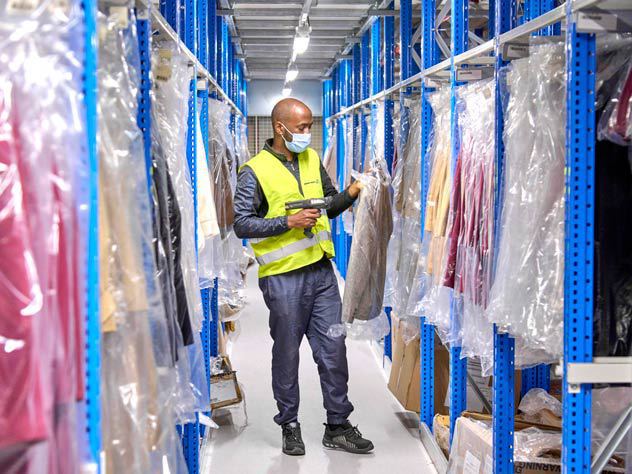Back How to build resilience into standard supply chain operations
Market Insights
How to build and maintain a resilient supply chain
It makes sense for businesses in every sector to carefully balance supply and demand for their goods and services. In a global economy, buyers, sellers, suppliers, retailers, producers and shippers all form a complex, interconnected supply chain. The essential factors for success are keeping costs down, timings tight, inventories low, and customer satisfaction high.
The challenge in this ‘just enough, just in time’ world is that when the carefully managed balance between cost and performance is disrupted, the effects can be severe. Of course, the Covid pandemic is an example of this. However, the Suez Canal blockage, which held up 12% of the world’s trade that usually passes through it every day, is perhaps a better example of the type of disruptive event that seems to be on the increase.
A recent McKinsey report found that disruptions that last longer than 1 month are expected to return every 3.7 years, while disruptions of 1-2 weeks are expected to occur every 2 years. Major supply chain shocks, such as the COVID-19 pandemic, are expected to happen every 5 years.
Against this backdrop, business resilience becomes a crucial factor not just for success but for survival. This article looks at what resilience means for integrated logistics teams and technology and where potential exposure points can be found in the supply chain. We also explore what best practice means in the context of supply chain management.
What does resilience really mean?
We all have a good idea what a resilient individual is like. Someone with a resolute, calm, positive and pro-active attitude. For business, the story is somewhat different. Gartner describes business resilience as the ability to adapt to structural changes by modifying supply chain strategies, products and technologies. It doesn’t sound quite as admirable as the individual’s traits, but beneath that definition are a multitude of layers made up of business insight, anticipation, planning, clarity, quick thinking, collaboration and the right technology. When these attributes are integrated into a supply chain strategy, every business is able to prevent and deal with disruption quickly and dynamically.
Why resilience matters
The Covid pandemic, the Suez Canal blockage, the tragic Beirut Port explosion, the Sydney Port Strike, Brexit ramifications, trade regulations and sanctions, oil price shocks - disruptions to the supply chain can be many and varied. However, the risks they constitute for a business are undeniable. Increased shipping costs, failure to deliver orders on time, lost sales, shortages of components and raw materials all reverberate throughout a business. McKinsey’s report into supply chain disruption found that companies can expect to lose 42% of one year’s EBITDA every decade due to supply chain shocks.
With the right tools, processes, mindset and experience in place, resilience enables a business to keep inventory at efficient levels and fulfil orders on time and in full. A fortified supply chain offers more opportunity for teams to act fast and prevent disruption and activate recovery in parallel, such as planning for increased sales, reducing lead times, streamlining inventory costs, and improving cash flow.
What does a resilient supply chain look like?
Building an operation with a forward thinking, pro-active approach to supply chain disruption takes a combination of the right tools and the right team.
Your processes, tools and available data can be used to leverage past learnings to predict potential future disruption. They can also be used to access robust, real-time data to give you clear visibility of any disruption and enable faster, better decision making. In practical terms, when disruption occurs, this means logistics and supply chain teams will know where shipments are. They will be able to identify what risk they may be subject to and then use data to define and decide how to manage the disruption.
From a team point of view, you need to have experienced people supplied with the right information to anticipate and resolve disruptions. This takes strong leadership, empowered teams, continuous learning and development, pro-active problem-solving mindsets, and strong end-to-end collaborative relationships with supply chain partners.
Proactive disruption management
So, the theory and elements of supply chain resilience are established, but what does best practice look like, and what steps can you take to start building better resilience?
It’s important to know what options are available. Have the data and processes for handling disruption not just documented but communicated to all stakeholders, so they know where to source, what partners to turn to, what routes to switch to and what equipment you’ll need.
Prepare your crisis response in advance and have them designed into agile workflows so that roles, responsibilities and actions become second nature in a crisis. Ally these with clear, concise crisis communication processes.
It is vital to act quickly and decisively when disruption occurs. It is also key to establish the right balance between rapid response and hasty actions. Establish trigger points for actions, ensure your teams know both what’s expected in terms of reaction times and when the right time to escalate plans are. The key is to act fast, act soundly and to always remember that ‘perfection is the enemy of good when it comes to emergency management’, Dr Mike Ryan, WHO.
Key take-aways on resilience for supply chain managers
- Resilience will continue to remain a key success factor now and longer-term
- Resilience is not established when disruption occurs but before
- Building resilience is not a one-time fix but a continuous process.
- Every crisis is a learning opportunity
Learn more about our approach to 4PL integrated logistics how it builds supply chain resilience for your business.










